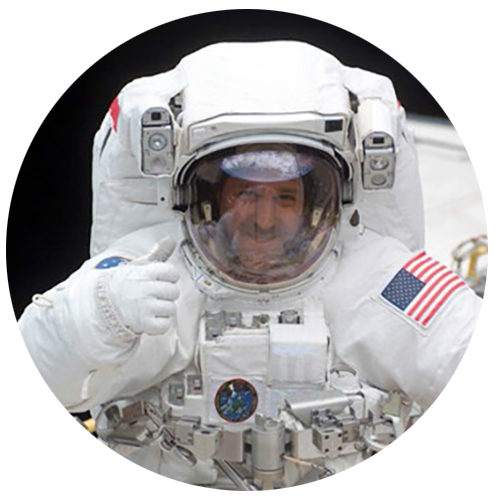
Title: Adaptable Wearable Sensors: The Cutting Edge of Astronaut Health Surveillance
As human endeavors in space extend further and for longer durations than previously imagined, the real-time tracking of astronaut health has escalated in importance. The rise of innovative technologies in flexible, skin-conforming wearables is playing a crucial role in this mission—providing continuous physiological information while molding to the distinctive and extreme conditions of outer space.
Effects of Space on Human Physiology
The conditions of space are vastly different from those on Earth and present several risks to human well-being. Microgravity leads to the redistribution of bodily fluids, diminishing cardiac workload and disrupting standard blood pressure control. Extended time in this environment can result in cardiovascular complications, muscle degradation, and significant reductions in bone density. Furthermore, outside the protective magnetosphere of Earth, astronauts face higher levels of cosmic radiation, particularly during spacewalks. Additionally, extreme temperature variations can further strain the body’s regulatory mechanisms.
Adaptable Wearables: A Revolutionary Remedy
Conventional medical apparatus used to monitor vital signs has often been unwieldy and functionality-limited, frequently hindering movement—an unacceptable trade-off for astronauts performing intricate tasks in a microgravity setting. Adaptable wearable sensors provide a solution to these challenges. These ultra-thin devices adhere directly to the skin, acting like a secondary layer. They create minimal disruption to an astronaut’s tasks while continuously gathering and relaying health information.
A recent extensive analysis in the journal Wearable Electronics underscores how these intelligent devices are ready to tackle four primary categories of health issues induced by space:
1. Cardiovascular Surveillance
Employing technologies such as photoplethysmography (PPG) and electrocardiography (ECG), these sensors can monitor heart rate, rhythm, oxygen levels, and blood flow. Ongoing data collection enables the identification of irregularities, including arrhythmias or unusual blood pressure fluctuations, allowing for timely intervention before minor issues escalate.
2. Musculoskeletal Well-Being
Electromyography (EMG) sensors integrated into wearables are instrumental in assessing muscle strength and activity. These tools gain particular importance during spaceflight, where diminished physical activity accelerates muscle loss. Keeping track of this decline allows for the tailoring of exercise regimens to better preserve muscle health.
3. Neural and Cognitive Assessment
Electroencephalography (EEG) sensors built into headgear enable researchers and flight medical personnel to evaluate brain function and cognitive performance. This monitoring is crucial for ensuring astronauts maintain mental acuity in high-stress, high-stakes situations, where even minor lapses in decision-making could have dire consequences.
4. Environmental Surveillance
Wearables can also incorporate sensors that monitor ambient radiation, temperature, humidity, and exposure to cosmic dust. This combined perspective on both physiological and environmental conditions aids astronauts and mission control in connecting health symptoms with external influences.
Beyond Surveillance: Proactive Systems for Space Health
These groundbreaking wearables transcend mere data collection—they are evolving into proactive early-warning systems. By leveraging algorithms and pattern recognition, these sensors can notify astronauts and medical teams of anomalies such as decreasing oxygen levels, initial indications of heat-related illnesses, or heightened cosmic radiation exposure—well ahead of visible symptoms or threats.
Technical and Ethical Hurdles
Despite the potential of these devices, the path to widespread implementation is fraught with challenges. The review identifies three main obstacles:
– Device Resilience: Sensors must maintain stability and functionality in a harsh space environment marked by rapid temperature changes, mechanical strains, and cosmic ray interference.
– Data Confidentiality: Ongoing health monitoring raises significant ethical considerations—who should have access to this information, and how can astronaut privacy be safeguarded in such a deeply personal digital landscape?
– Data Consolidation: With various sensor types gathering numerous metrics, integrating this vast amount of information into coherent and actionable health profiles remains a technological challenge. Success relies on the creation of smart systems powered by artificial intelligence and machine learning.
Looking Ahead: Energy Harvesting and Nature-Inspired Design
The future of these intelligent wearables lies at the convergence of technology and biology. Researchers are working on energy-harvesting solutions that can convert body heat or movement into electricity, potentially resulting in self-sustaining devices that do not require frequent recharging—an essential capability for extended missions to Mars or beyond.
Notably, scientists are also examining evolutionary biology for insights. Future physical training programs for astronauts could reflect the spiral movements observed in birds during flight or fish swimming—patterns that enhance muscle utilization and could assist in maintaining muscle and bone mass in microgravity.
A Stealthy Guardian for Space Travelers
Ultimately, these adaptable wearables may soon become as indispensable to space survival as helmets and oxygen supplies. Constantly alert, these smart patches and bands promise to recognize and avert medical emergencies before they manifest—a necessity rather than a luxury when Earth appears merely as a distant blue speck.
As organizations like NASA, ESA, and private initiatives such as SpaceX and Blue Origin probe deeper into space, extend human habitation on lunar outposts, and gear up for Mars missions, the integration of wearable health technology signifies a new chapter in space medicine—one that emphasizes prevention, personalization, and proactive care.